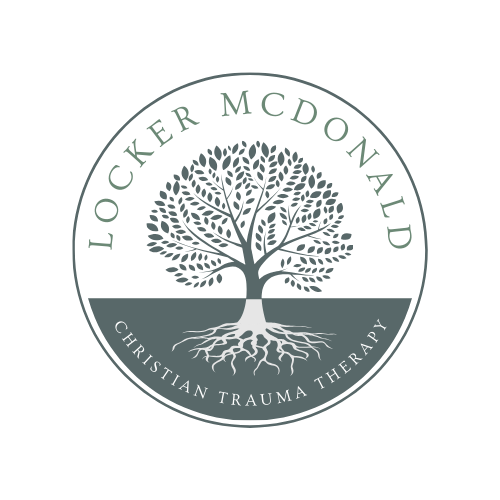Why Most People Struggle with Anxiety (And How It Might Be Trying to Help You)

Do you have trouble sleeping at night because your mind won’t slow down?
Maybe you’re lying in bed replaying that awkward moment from high school, worrying about tomorrow’s meeting, or mentally cycling through a never-ending to-do list. You might feel tension in your shoulders, tightness in your chest, or a pit in your stomach—and you don’t really know why.
Or maybe you find yourself biting your nails, doom-scrolling social media, or doing anything you can to distract yourself from the racing thoughts and uneasy body sensations.
Why Most People Try to “Fix” Anxiety the Wrong Way
So many people struggle with anxiety and are desperate to make it go away. We turn to the internet, friends, or familiar advice that might help short term—but often fail to bring lasting relief.
Speaking as a millennial raised in the Southeastern United States, most of us weren’t taught how to identify or manage anxiety. Instead, we’ve learned to focus on fixing the behaviors anxiety produces. We try to white-knuckle our way through life, hoping a prayer, a pill, or a coping skill will be the magic solution.
And when those “fixes” don’t fix us, we often spiral into shame—believing there must be something wrong with us.
What If Anxiety Isn’t the Problem?
What if the real solution isn’t found in behavior modification at all?
What if anxiety says more about your environment and your story than it does about who you are?
In my experience, anxiety isn’t the enemy—it’s the messenger. A cliché metaphor, but a useful one: anxiety is like a check engine light. It’s not the problem itself—it’s signaling that something deeper needs attention.
Anxiety Is a Survival Signal
Like all emotions, anxiety is wired into us to move us to action. It triggers a chemical response that puts our nervous system into a heightened, “hyperaroused” state. This state gives us the energy to:
- Fight (engage with a threat)
- Flight (get away from a threat)
- Freeze (hide or shut down to avoid a threat)
In certain situations, this response is absolutely necessary for survival.
Imagine walking through the woods and stumbling upon an angry mama bear protecting her cubs. You don’t need to logically analyze your next move—you need to run like the wind. That’s anxiety doing its job.
Our Brains Learn What Is Dangerous
Here’s the thing: our brains are always learning what counts as “danger.”
If you grew up in an unpredictable or abusive environment, your nervous system may have expanded its definition of threat. Suddenly, anxiety about deadlines or social gatherings starts to make a lot more sense.
- A history of bullying might explain your social anxiety.
- A chaotic home might explain your panic when things feel out of control.
- A demanding or critical environment might explain your perfectionism.
Anxiety becomes a learned survival strategy—a sign of how your brain adapted to keep you safe.
The Hope: Your Brain Can Change
The good news? Your brain is plastic—meaning it can change.
Through intentional healing, you can rewire patterns that once felt hardwired. While anxiety may never completely disappear (and it shouldn’t—it helps keep us safe), it doesn’t have to dominate your life.
Yes, there’s often a genetic component to anxiety. And yes, medication is sometimes a helpful part of the healing process. But anxiety rarely happens in a vacuum. It’s shaped by the context of your life—your story.
Your Story Matters (And So Does How You Heal)
The logo for my practice—a tree—comes from this idea: your brain, like a tree, is shaped by your lived experiences. Each branch, each connection, represents how you’ve been treated and how you’ve responded. To work with anxiety, we have to understand the environment that shaped the tree.
That’s why I use a therapeutic approach called Eye Movement Desensitization and Reprocessing (EMDR).
Despite what you might’ve seen in viral videos, EMDR isn’t just a “hypnotic state.” It’s a structured, evidence-based method that helps people:
- Understand how their past shaped their present
- Develop tools for managing overwhelming symptoms
- Heal trauma at the root level
I love EMDR because it’s flexible and phased. First, we build a foundation of tools and safety. Then, when you’re ready, we begin the deeper work of exploring what Joseph Campbell might call “the cave”—the place of transformation.
It’s Not Just EMDR
EMDR isn’t the only modality that works.
Other approaches like Narrative Therapy, Trauma-Informed CBT, Internal Family Systems (IFS), and Somatic Experiencing can also support healing.
The key thread they all share?
They don’t treat anxiety as something to get rid of. They treat it as something to listen to.
Anxiety often tells us:
- What’s happening in our current environment
- What has happened in our story
- What still needs care and attention
“But My Childhood Was Fine…”
You might be thinking:
- “My childhood was great.”
- “I’m not mad at my parents.”
- “I don’t want to play the victim.”
I hear you. I’ve had those thoughts too. And I’ve worked with many clients who have as well.
What I’ve learned—both personally and professionally—is that when we approach ourselves with kindness, curiosity, and compassion, we begin to see connections we never noticed before.
Sometimes we need another person to offer that perspective. Sometimes, we need to become that person for ourselves.
Your Story Doesn’t Define You—But It Shapes You
I hope you’ll consider engaging with your story—not to dwell in the past, but to understand the path you’ve walked.
Your story doesn’t define you. But it does offer context for the role you’re playing now—and the role you want to play going forward.
There’s so much more to you than what happened to you or how you responded to it. But the only way to really know that is to slow down, take a look, and approach it with kindness.
Interested in Exploring Your Story?
If this resonates, and you’re curious about working together, I’d love to talk with you about how I can walk alongside you on your healing journey.
You don’t have to do this alone.
You don’t have to white-knuckle your way through anxiety.
Let’s explore the message behind the check engine light—together.
